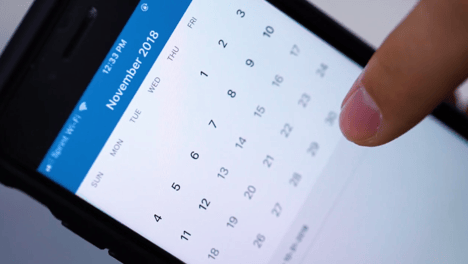In the world of on-demand transportation, it's understandable to think people in wheelchairs are overlooked. The top two transportation network carriers (TNCs), Uber and Lyft, have done little to cater to this group. Even in large metropolitan areas, a very small percentage of Uber and Lyft vehicles are wheelchair accessible.
For people using wheelchairs, this can be frustrating, especially if they believe they are left without options. They may feel like they are parsed out of the ride-hailing phenomenon, as suggested in a recent article, Why Can't Uber and Lyft Be More Wheelchair Friendly?, published by CityLab.
However, this is not the case. Paratransit providers across the country can and do offer the same ride-hailing experience that Uber and Lyft can.
There's an app for Paratransit

Just as Uber and Lyft offer custom rider-facing mobile apps, so are there apps available for paratransit riders. Although it is suggested that paratransit riders must call to book a trip a day or more in advance, it is not a requirement; it is merely an option. They may book a trip a day or two in advance. They may choose to use a telephone and speak to an operator. In fact, some riders prefer to call into a service center and speak with an operator because they like the human interaction or may have specific questions that can only be answered by a person.
This is an area where Uber and Lyft are at a disadvantage in terms of capturing those riders. Because they are self-proclaimed technology companies alone and not transportation companies, they do not offer customer service centers for riders. Paratransit providers offer both options to riders, so they can call or schedule same-day trip using a mobile app.
Where's my ride?
Another misconception is that paratransit vehicles are woefully behind in terms of on-time performance compared to TNCs. Right now, Uber and Lyft boast that a vehicle will arrive within 15 minutes of the time entered. When a rider schedules a trip using a paratransit service, that vehicle also arrives within a short time window. In most cases, paratransit vehicles will arrive at the time scheduled or shortly after or before that time, just like Uber and Lyft vehicles. Some paratransit providers may leave as much as a 30-minute window open to account for heavy traffic or long distances, but they usually arrive close to the time scheduled. Much like Uber's and Lyft's apps, riders can also monitor their vehicle's location in real-time because paratransit fleets are equipped with GPS technology. Riders can easily get a sense of where their vehicles are, an estimated time of arrival, and they will even receive an alert when the vehicle is close to the pick-up location.
Successful paratransit and microtransit models
Handitran of Arlington TX, is a paratransit provider that offers on-demand, ride-hailing service to its disabled riders. Much like a TNC, riders have the ability to book a trip using a mobile app. This trip can be booked the same day or days in advance. When a trip is booked, the agency works to ensure a vehicle arrives at the time specified. In some cases, vehicles often arrive a few minutes ahead of schedule.
San Joaquin Regional Transit District located in Stockton, CA is another example where this model works. They have both a microtransit and paratransit service that offer on-demand transportation to both disabled and able-bodied passengers. San Joaquin Regional Transit District also offers a rider-facing app, which is designed to book trips. Trips can be booked the same day or days in advance; and like with a TNC, when a trip is booked, riders have the option of paying with a credit card registered inside the app.
Both Handitran and San Joaquin have proven to be a success because they are working with a technology partner that enables riders to book and monitor trips using a mobile app similar to TNCs; other paratransit providers can do the same.
Where traditional TNCs fall short
CityLab's article is fair to point out that Uber and Lyft have been resistant to ensuring there are enough vehicles that are wheelchair accessible to meet the demand. However, that is not the only issue at hand. Even if there were ample vehicles, drivers are independent contractors and go through no specialized training to cater to or care for those in wheelchairs. Uber and Lyft take no responsibility for the safety and well-being of any rider, let alone one with special needs.
That is where paratransit and some microtransit services fill a void that people in wheelchairs should consider. Not only are the transportation service providers capable of functioning in the same way as a TNC, but they employ salaried drivers who undergo specialized training that meet or exceed ADA requirements. In addition, riders can be sure that all fleet vehicles are ADA compliant, so locating an available vehicle to pick up someone in a wheelchair is not an issue.
So, where are we headed?
Although it's good that Uber and Lyft recognize their limitations as a result of their business models and they want to work to be more inclusive, it is a mistake to think they are the only options available. There are many paratransit and microtransit services across the country that service large metropolitan areas that meet the needs of those in wheelchairs and offer the same user experience as a TNC. Those who feel slighted by Uber and Lyft need only contact their local transportation providers to get around town.
About the Author
 Michael Fino is Ecolane’s marketing analyst. He is a creative communications expert, responsible for writing, producing, and managing a variety of marketing, educational and PR content in addition to supporting business development through inbound marketing and lead generation efforts. He came to Ecolane with more than nine years of experience in the marketing and communications field. Michael graduated from King’s College in Wilkes-Barre, Pa and later went on to earn his Master’s in Strategic Communications with a focus in PR and Journalism from Villanova University. His weekends are often spent at fairs and festivals, going to art and history museums, or kayaking with friends.
Michael Fino is Ecolane’s marketing analyst. He is a creative communications expert, responsible for writing, producing, and managing a variety of marketing, educational and PR content in addition to supporting business development through inbound marketing and lead generation efforts. He came to Ecolane with more than nine years of experience in the marketing and communications field. Michael graduated from King’s College in Wilkes-Barre, Pa and later went on to earn his Master’s in Strategic Communications with a focus in PR and Journalism from Villanova University. His weekends are often spent at fairs and festivals, going to art and history museums, or kayaking with friends.
%20(200%20x%20100%20px).png)
